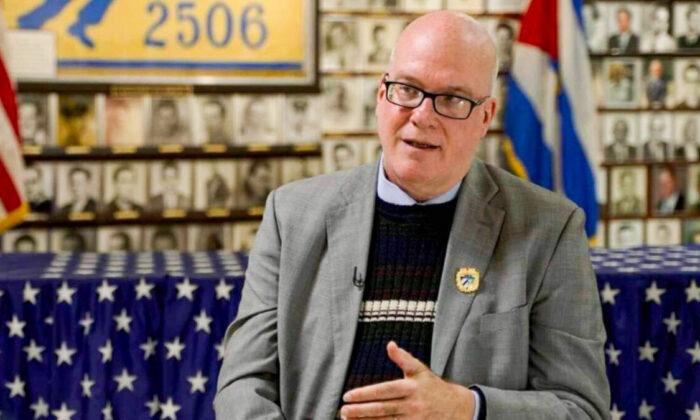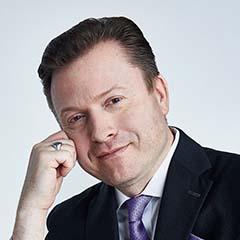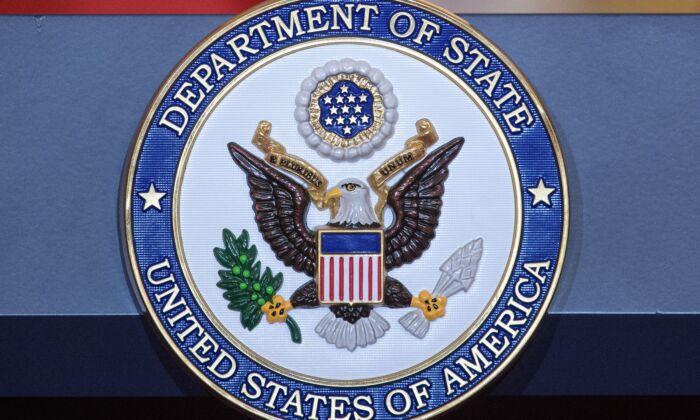“Then Castro and his acolytes took control of the country with great support from American liberals in every way you can imagine.”
A Springboard for Socialism
It is very clear in Che Guevara’s writings that the purpose of the Cuban revolution was to create a platform through which socialist revolution would spread to the United States and Latin America, Gutierrez-Boronat said.
“Castro was surrounded by international advisors” who helped him design a totalitarian state in Cuba, the activist said.
“Through a combination of planning and preparation by the Cuban Communist Party, and the U.S. Communist Party, and other left-wing forces, an opportunity emerged, and Cuba became a force for socialism in Latin America.”
From the very onset, the Castro regime wanted to take over Venezuela, and in fact, Cuba sponsored an armed invasion of Venezuela in 1967.
“The same thing was repeated in key countries which [Cuba] thought were essential to creating the united socialist republics of Latin America, and of course, to also cause social tension, class struggle and radical transformation of the United States,” Gutierrez-Boronat explained.
”That has always been the plan. It’s always been part of what the regime–and they don’t hide it that much–of what the regime states it wants to pursue.”
How the Media Built Castro’s Image

Gutierrez-Boronat asserts that media played an important role in building Castro’s image in America. For example, New York Times journalist Herbert Matthews was “essential in building the Castro myth,” the activist said.
Two years before Castro came to power, Matthews went up into the Sierra Maestra mountains in Cuba, where Castro was organizing a guerrilla movement against Cuban dictator and then-president Batista.
A few months after gaining power in 1959, Castro visited the United States, where he was presented as a democratic reformist, anti-communist, and pro-American, Gutierrez-Boronat said. “All that was false. They were already building a communist state in Cuba.”
Matthews’ coverage of Castro, as well as Castro’s visit to the United States, were steps taken to somehow deflect public attention from what the Left was really doing inside Cuba, Gutierrez-Boronat said.
“We are not afraid of an idea because we have our idea, and we believe in our idea,” Castro added.
Repairing Socialism’s Image
“By 1959, Khrushchev had revealed the crimes of Stalin at the congress of the communist party. The [Soviet] invasion of Hungary in 1956 had taken place, along with the crushing of the East German worker strikes; all of that was in the air. People saw how repressive communism was,” Gutierrez-Boronat explained further the positive media coverage of the Cuban communist leader.“[At that time,] the Left needed a successful socialist revolution that didn’t have any of the stains of the bad reputation that Stalinism had already gained in the world.
“Then along comes this revolution in a tropical country with some charismatic leaders promising utopia and heaven for Cubans. They began to build that up from the very onset.”
The most severe protests demanding democratic reforms broke out in Hungary, in the fall of 1956. The Soviet Union resorted to invading the country to maintain its dominance there.
Media Blackout of Cuban Protests
To this day, because Cuba is supposed to be the driving force for spreading socialist revolution in the region, there is still an attempt to protect the Cuban regime from any bad publicity it generates for itself, Gutierrez-Boronat said. He referred to mass protests against the communist regime in July of 2021. The protests in Cuba were the largest against the regime in decades.
Since then, “thousands of Cubans have gone out to publicly protest against the regime, especially young artists, women, youth, all demanding change, and demanding the end of communism,” Gutierrez-Boronat said.
The protests continue and hundreds of protesters have been arrested and imprisoned, but the media do not report on it, Gutierrez-Boronat said. Although protests can be seen on video recordings, “there seems to be a literal blackout on what’s going on in Cuba with the citizen defiance of the regime.”
In the past few months, videos and photographs have appeared, showing families collaborating to set up barricades as a form of protest so police cannot enter neighborhoods, Gutierrez-Boronat said. “That was unheard of in Cuba five years ago or three years ago. It’s a new phase of resistance by the Cuban people.”
Communist regimes initially seek to destroy the economy to control the people, Gutierrez-Boronat said. “In the case of Cuba, they had to control and destroy Cuban agriculture in order to control [the] food supply.”
“They need to control food to control cities, and they need to control cities to control the middle class because the middle class can oppose them successfully ... But once they unleash these forces of destruction, they lose control.”
“And this is what drives the insurgency forward. The regime still has a strong security apparatus that can prevent the emergence of a unified national movement, but they can’t destroy the movement as it is now; organic, based in neighborhoods and towns, and flourishing.”
To break the information blockade on what is happening inside Cuba, Gutierrez-Boronat and other activists participate in international conferences, organize protests, and meet with political, labor, and student leaders to “get the word out.”
“It has been successful,” Gutierrez-Boronat said. ”A network of solidarity for a free Cuba has emerged over the past few years, and we greatly contributed to that.”






